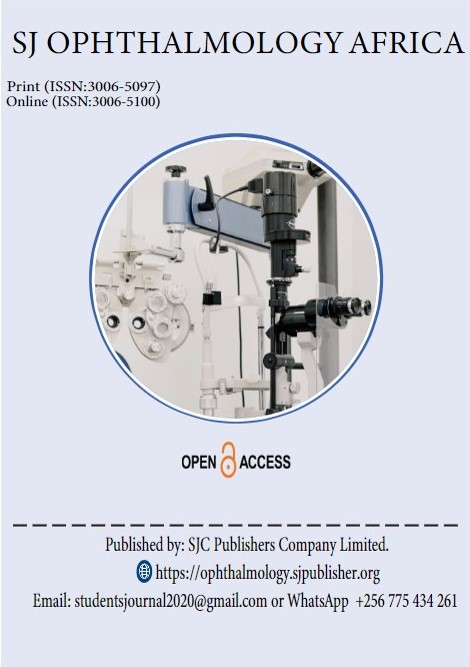Impact and factors associated with the prevalence of trachoma among patients aged between 40-80 years attending eye clinic at Moroto regional referral hospital. A cross-sectional study.
DOI:
https://doi.org/10.51168/7sw75g25Keywords:
Prevalence of trachoma, Patients aged 40-80years, Blindness, Chlamydia trachomatis, Moroto regional referral hospitalAbstract
Background
Trachoma is the leading cause of blindness worldwide. It is caused by an obligate intracellular bacterium called Chlamydia trachomatis. The study intends to establish the impact and factors associated with trachoma among patients aged 40-80years attending the Eye clinic at MRRH.
Methodology
A descriptive cross-sectional study was conducted using a quantitative research method at the eye clinic of MRRH in Moroto District, Northeastern Uganda. The study population consisted of all patients aged between 40-80 years who attended the eye clinic at MRRH during the study period, with a sample size of 60 participants.
Results
The majority, 21(35%), were aged between 61-70 years. 37(61.7%) were females, while 23(38.3%) were males. 38(63.7%) were peasants. 39(65%) experienced an inadequate water supply. 34(56.7%) were aware of proper hand washing after health education. 45(75%) practiced face washing where 29(64.4%) were using plain water. 42/60(70%) were aware of trachoma. Concerning the impact of trachoma 38/60(63.3%) had family members who suffered trachoma. Out of the 38 who had trachoma victims, 20(52.6%) reported blurred vision, 9(23.7%) reported corneal ulcer, 6(15.8%) reported corneal opacity, and 6(15.8%) reported corneal opacities secondary to ulceration as the main impacts of trachoma on their family members.
Conclusion
Factors associated with the prevalence of trachoma were aged between 61-70 years, female gender, peasants, living in rural areas, inadequate water, and low latrine coverage. Associated impacts of trachoma were blurred vision, corneal ulcer, and corneal opacity secondary to ulceration.
Recommendation
Ministry of Health to equip all eye health facilities with equipment for early screening, diagnosis, and treatment of trachoma, D.H.O. to set up programs that sensitize people about eye care services, like going for eye medical services whenever they get problems with their eyes.
Downloads
Published
Issue
Section
License
Copyright (c) 2025 Andrew Turinawe, Jalia Nanangwe (Author)

This work is licensed under a Creative Commons Attribution-NonCommercial-NoDerivatives 4.0 International License.

